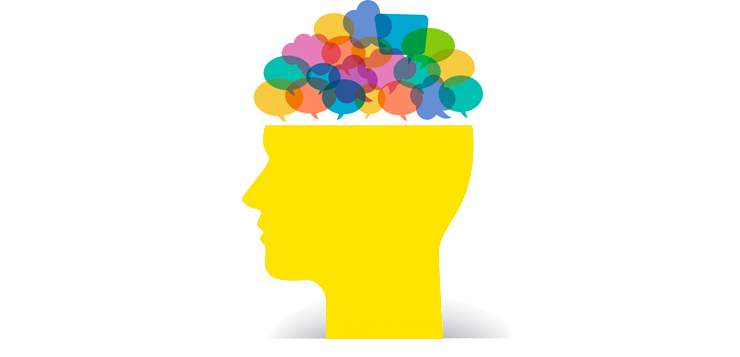The Laboratory of Neuroimaging at the University of Southern California says that a person has about seventy thousand thoughts per day. Whether that is true or not, one thing you can be certain of is that the mind never stops thinking, analyzing, and trying to figure things out. It doesn’t matter whether you’re awake or asleep; the wheels keep turning. Our minds work just like a movie—in both images and words. Some of us think more often in images, while others experience more talking, and for some it’s a good mix of both. The interesting thing is that most of the time, we’re not even aware of what’s going on in our minds.
When you begin to bring mindfulness to thoughts, one thing you notice is some kind of “self-talk” going on—you’re talking to yourself. As we bring a beginner’s mind to it, we can’t help but notice how unbelievably hard we are on ourselves so much of the time. We say things that we would never say to a friend: What is wrong with me? or I’m such an idiot or I’ll never get this right. Over time, we notice how mood distorts the thoughts in one direction or another. When we’re in a good mood, the frequency and intensity of the negative thoughts lighten. Maybe we even notice ourselves thinking, I’m brilliant! And when there is more emotional distress, the negative thoughts become more intense and frequent.
Just intentionally being curious about how your mind works and even labeling certain categories of thoughts widens the space between awareness and the thoughts themselves. In that space is where your choice and freedom live.
But like all things, these mental formations have a life span, appearing and disappearing. Bringing mindfulness to our thoughts not only helps us become more familiar with the way our minds automatically operate but also frees us from having these thoughts dictate who we are and what we believe. You are not your thoughts—not even the ones that tell you that you are.
What’s on your mind?
From time to time today, ask yourself the simple question, What is on my mind? Do you notice that you are thinking mostly in images, words, or both? After being aware of one thought, ask yourself: I wonder what thought will come up next? Be curious about how your mind is so quick to judge yourself and other people. Do you notice how these various mind states—thoughts and images—are constantly changing?
Here are a few categories of thoughts that you may find your mind drifting into:
- Catastrophizing—This is the mind’s “what if” game. It snowballs the worst-case scenario of the future with worried thoughts: What if this happens? What if that happens? These thoughts amplify anxiety and depression.
- Blaming—This is a mind trap in which some uncomfortable feeling is expelled by holding ourselves responsible for another’s pain or holding others responsible for our pain. The problem here is that when you perceive the issue as lying outside of you, you give your power away to effect change.
- Rehashing—This is when our thoughts reflect on past circumstances, going over them again and again, often in an effort to figure something out.
- Rehearsing—This is the mind practicing some future event, playing through, again and again, the possible ways it may unfold.
Just intentionally being curious about how your mind works and even labeling certain categories of thoughts widens the space between awareness and the thoughts themselves. In that space is where your choice and freedom live.
This article was adapted from MBSR Every Day, Daily Practices from the Heart of Mindfulness-Based Stress Reduction by Elisha Goldstein PhD, Bob Stahl PhD







